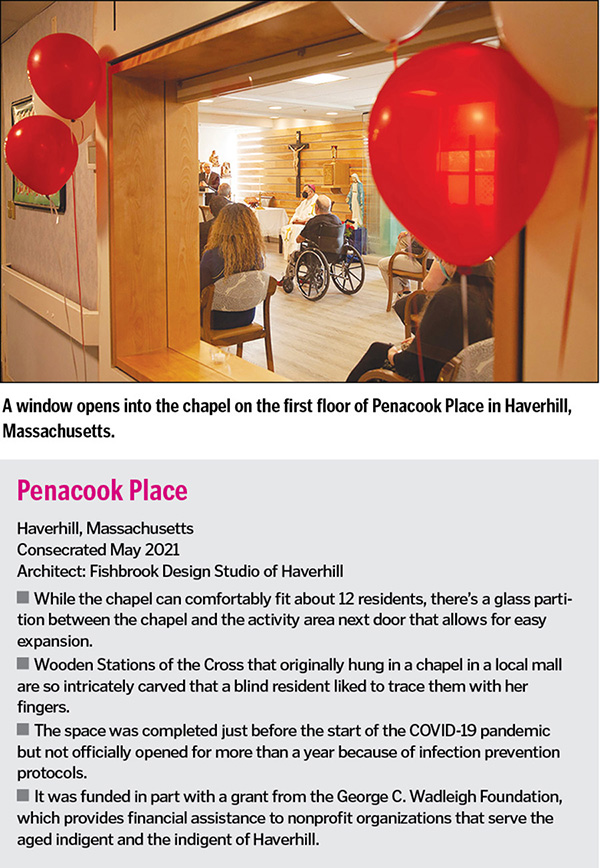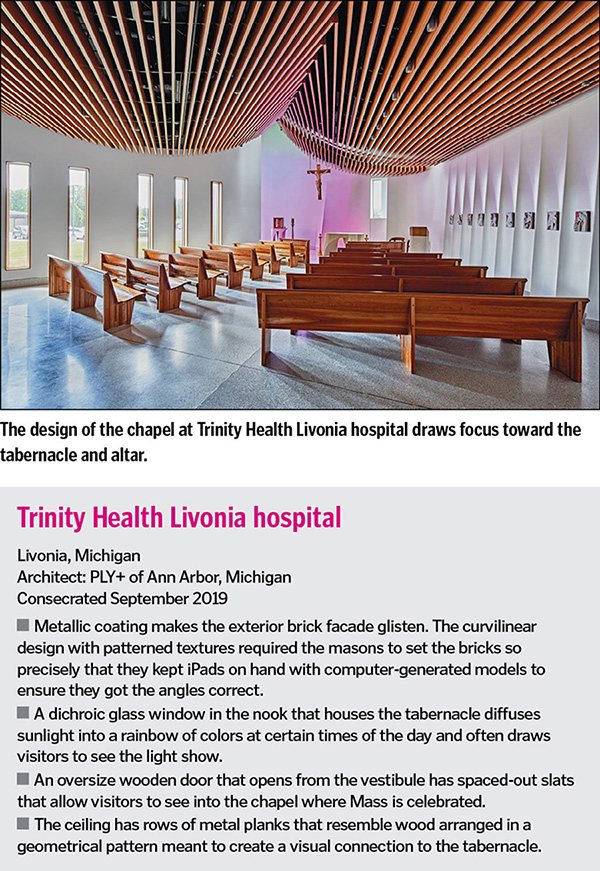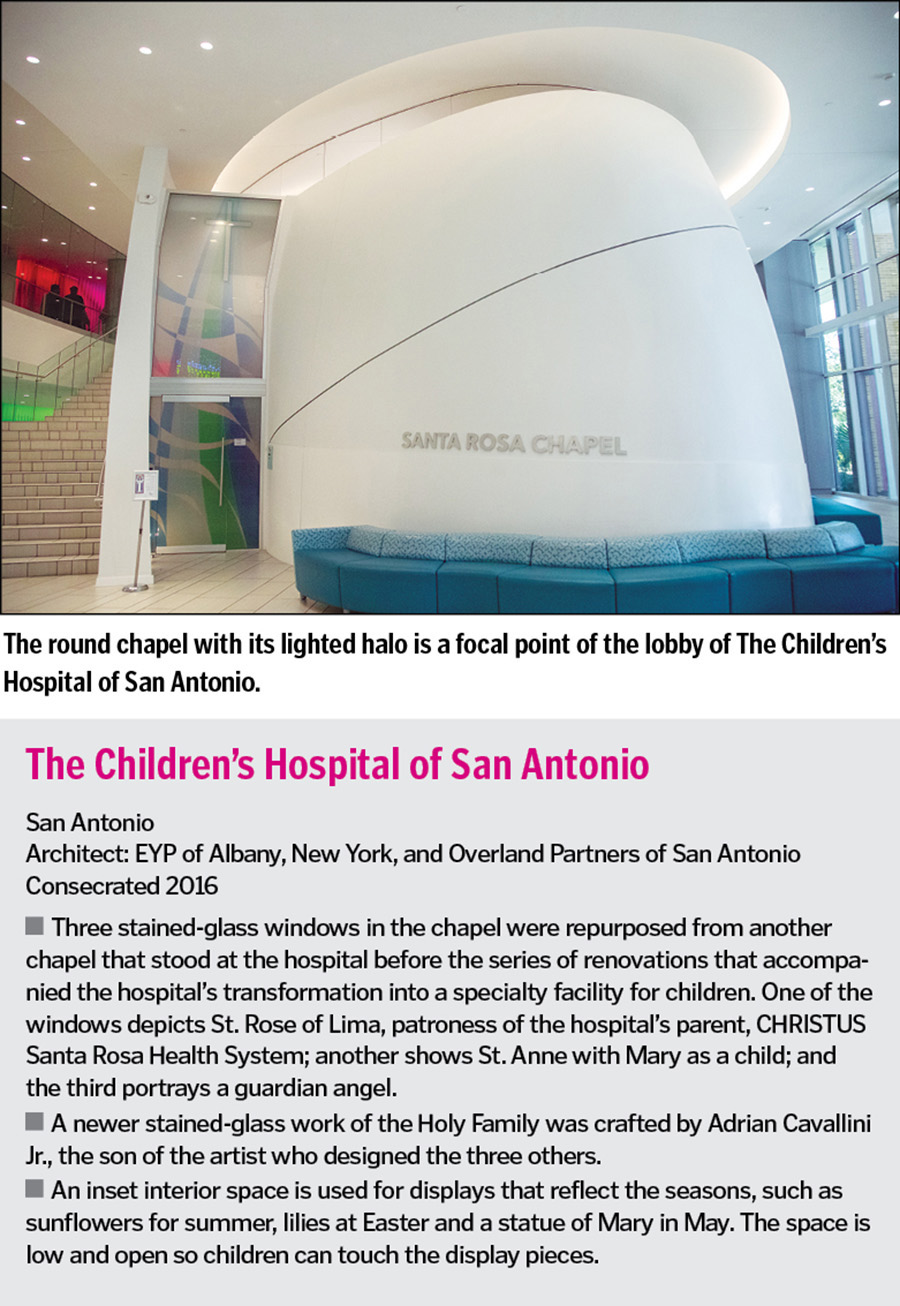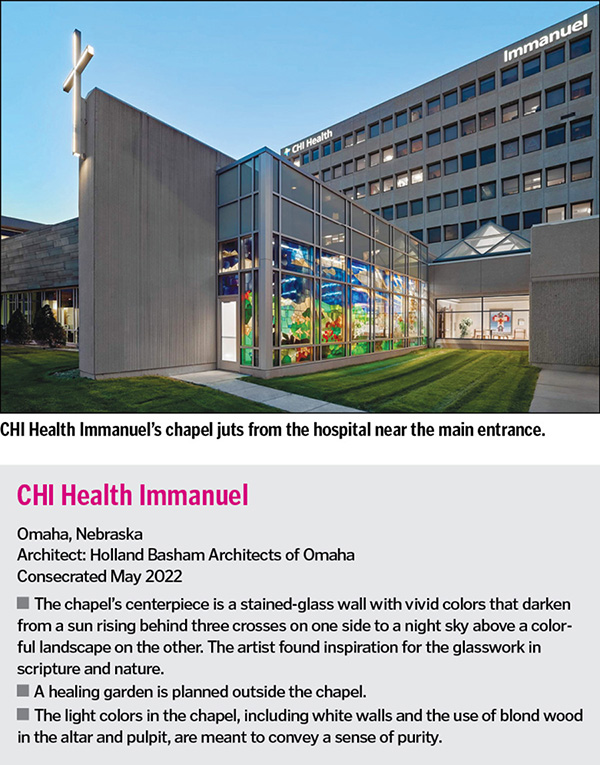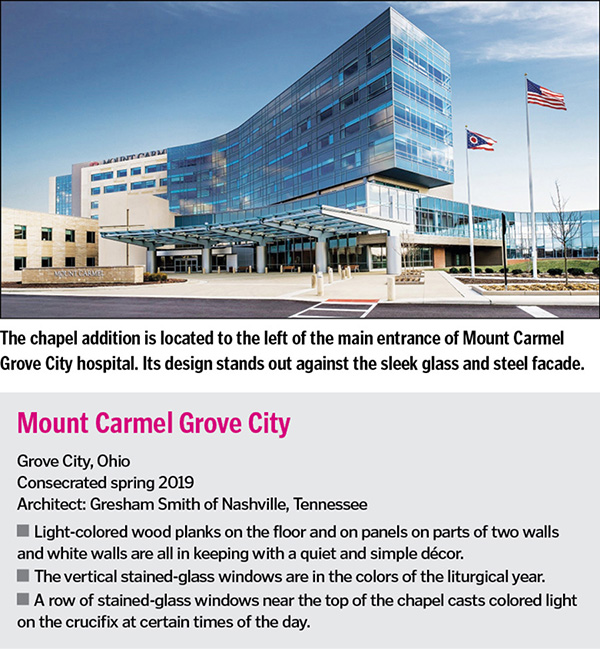From grand to humble: Sublime design elevates hospital chapels
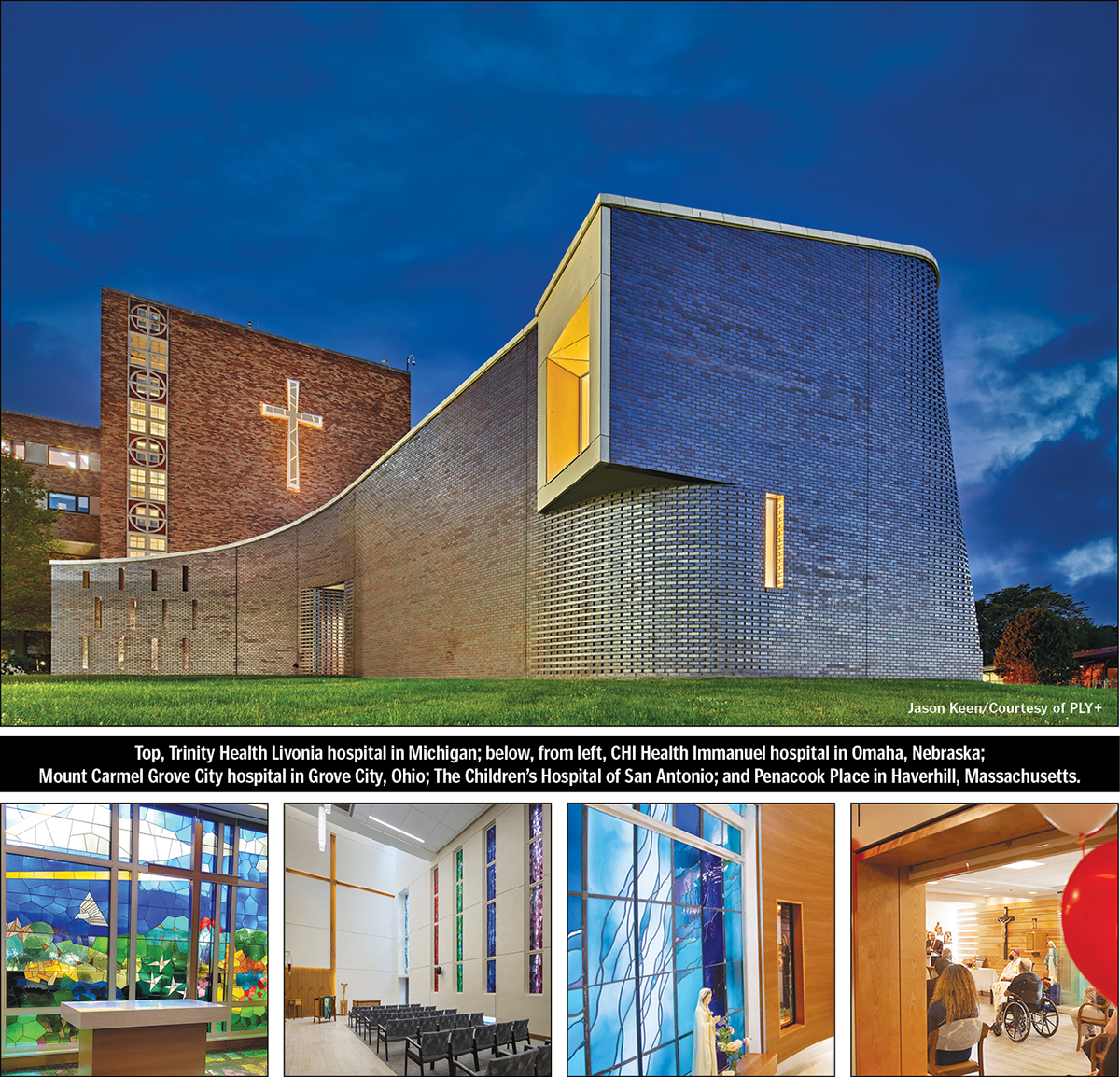
The end result of a chapel design process can be as grand as the curving, metallic finish brick wonder that extends from Trinity Health Livonia Hospital in Michigan or as humble as the holy space carved out from a section of the activity room on the first floor of the Penacook Place skilled nursing and rehabilitative care center in Haverhill, Massachusetts.
People who have been part of the process of creating a sacred place at a Catholic health facility say that while having a dedicated place for reflection, prayer and religious services is paramount, other factors such as history, location and resources also figure into the mix.
Fr. Gilbert Sunghera, SJ, says a sacred space "needs to transport you to another realm, that's the sense of the transcendent."
Fr. Sunghera directs the Liturgical Space Consulting Service, a nonprofit firm based at the University of Detroit Mercy School of Architecture, where he is also an associate professor. He has been a consultant on the design of many sacred spaces, including the Trinity Health Livonia hospital chapel.
'Beacon of spirituality'
Trinity Health Livonia President David Spivey says the chapel wasn't included in extensive upgrades at the hospital in 2013-2014. "It became a bit of a mission of mine to renovate the chapel and bring it
up to par with the rest of the hospital as the centerpiece of our sacred space," Spivey says.
Spivey says the design of the chapel pays tribute to the spirituality of the Felician Sisters who opened the hospital in 1959.
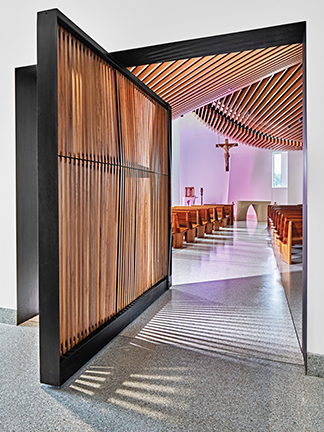
Working closely with a hospital design committee, the architectural firm PLY+ created a wing that Spivey says juts like "a beacon of spirituality" from under the massive lighted cross on the hospital's facade.
The $2.5 million project was funded solely by donors. Spivey credits Sr. Mary Modesta Piwowar, a Felician sister and former longtime hospital chief executive at Trinity Health Livonia, with rallying financial supporters to the cause.
"When she picked up the phone and asked people for a contribution, she brought a lot of gravitas to the task," he says.
Since the 2,600-square-foot chapel opened in 2018, it has won many architectural honors. An award note from the American Institute of Architects Detroit Chapter in 2019 cited the chapel for "creating an atmosphere of poetry."
Among the special features of the chapel are a separate, unadorned "seeker space" meant especially for those with no spiritual traditions to use for reflection and another room in the vestibule for Muslim prayer. Spivey says Livonia has a high concentration of Muslims and the hospital wanted to ensure that they felt welcomed in the sacred space.
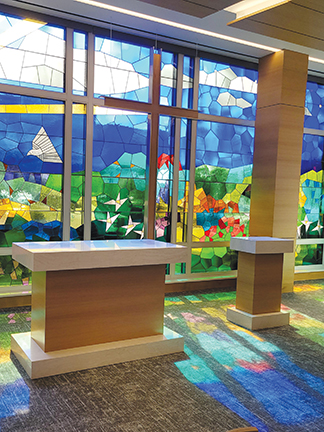
Honoring faiths
The new chapel that opened in May at CHI Health Immanuel hospital in Omaha, Nebraska, also was designed to be welcoming to all patients, visitors and staff yet still acknowledge the hospital's Catholic and Lutheran
heritage, says Kathy Bertolini, CHI Health division vice president of philanthropy.
"We hope this beautiful space at the (main) entrance of our hospital will be a beacon of hope to all who come to us for care and provide a clear message that this is a place of healing mind, body and spirit for people of all faiths," Bertolini says.
CHI Health, part of CommonSpirit Health, assumed control of what was Immanuel Medical Center in 2012. The Catholic medical center has been affiliated since its origins with the Lutheran Church.
At the chapel's dedication, the Catholic and Lutheran history of the hospital were celebrated as Archbishop George Lucas of Omaha and Lutheran Bishop Brian D. Maas consecrated the worship space. One of the ways the hospital's Lutheran tradition is reflected in the chapel is by a stained-glass window in the back with a Luther's rose, a symbol of the faith.
A stained-glass wall is a bright focal point as is a lighted exterior cross. The chapel replaced one that Bertolini describes as small, dark and not conducive to larger prayer services.
The chapel was funded with $1.5 million in donations.
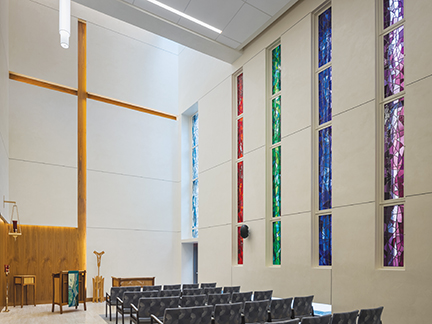
Cross connection
A cross made of transparent glass graces the exterior and the interior of the chapel at Mount Carmel Grove City near Columbus, Ohio. Built into the wall behind the altar, the illuminated cross is almost as tall as
the 2.5-story-high chapel.
The chapel was part of the original plan for the hospital, a $361 million Trinity Health facility that opened in spring 2019 and replaced a nearby hospital.
Sean Lansing, mission leader for Mount Carmel Health System, says in its austere elegance, the chapel reflects the preferences of the hospital's founding congregation, the Sisters of the Holy Cross, for minimal ornamentation. Its exterior is a light stone and its high interior walls are white except for light wood panels around the sanctuary.
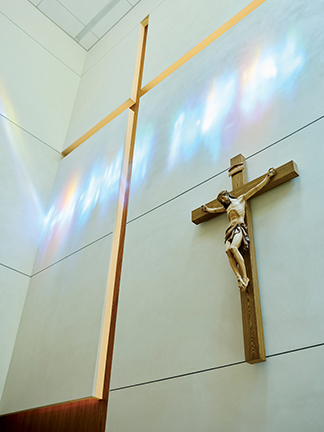
The chapel stands out from the modern steel-and-glass hospital it references, Lansing says. "You walk into this space and it's simple, it's warm," he explains. "You definitely feel a shift in space and that was the intention."
'Heart of our hospital'
At The Children's Hospital of San Antonio, the chapel has a distinct footprint in the lobby. The round white structure stands two stories high and is topped with a lighted halo.
Maggie Jones is director of spiritual care for CHRISTUS Santa Rosa Health System, the hospital's parent system and part of CHRISTUS Health. She says the design and location of the chapel reflect the intent of its planners to show that spirituality is central to the care of sick children.
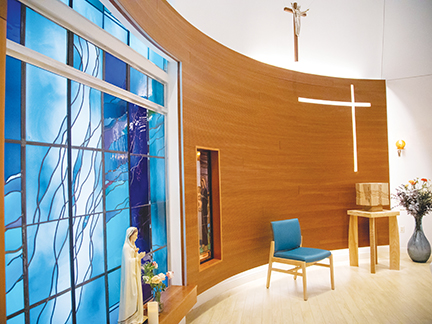
"It's the heart of our hospital, in terms of the building or the features here, and it's very much loved by visitors and associates," Jones says. "In terms of the shape, some people think it looks like an egg from the outside. In my mind it looks like a heart."
The handmade altar, tabernacle and lectern in the chapel came from a smaller, less visible chapel that was deconsecrated when this one opened in 2016, Jones says. The furnishings and fixtures are small, in keeping with a hospital for children. "We have small chairs in the chapel for children, as well as adult chairs," Jones says. "We want it to feel childlike and child friendly."
Gathered in his name
Penacook Place, a skilled nursing and rehabilitative care center in Haverhill, Massachusetts, didn't have a dedicated sacred space when it became part of Covenant Health in 2017. Masses were celebrated in the
dining room.
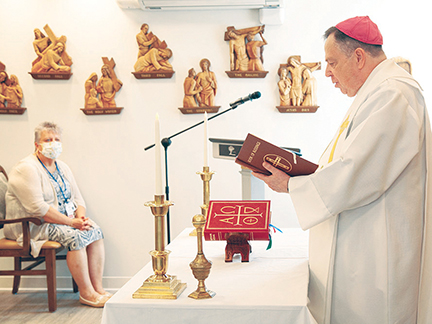
The space for the 310-square-foot chapel was carved from what had been an activity area on the ground floor of the three-story facility. It is an open area that can accommodate the walkers and wheelchairs needed by many of the facility's 140-some residents. It has room for about 12 people at a time but a glass partition opens to expand the seating capacity.
Even if the chapel is modest in comparison to those of some other Catholic facilities, Judy Riopelle, director of mission integration, says some prospective residents and their families are pleased there is a sacred space available for religious services and reflection.
Riopelle says Penacook Place staff retreat to the chapel to reflect and collect their thoughts. She saw many colleagues duck in before or after their shifts during the worst days of the COVID-19 pandemic.
"To be able to have that space in a busy, hectic sometimes very noisy environment, to have that haven, that sense of peace and quiet, that has been very well received by everybody," Riopelle says.
